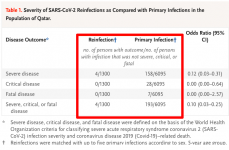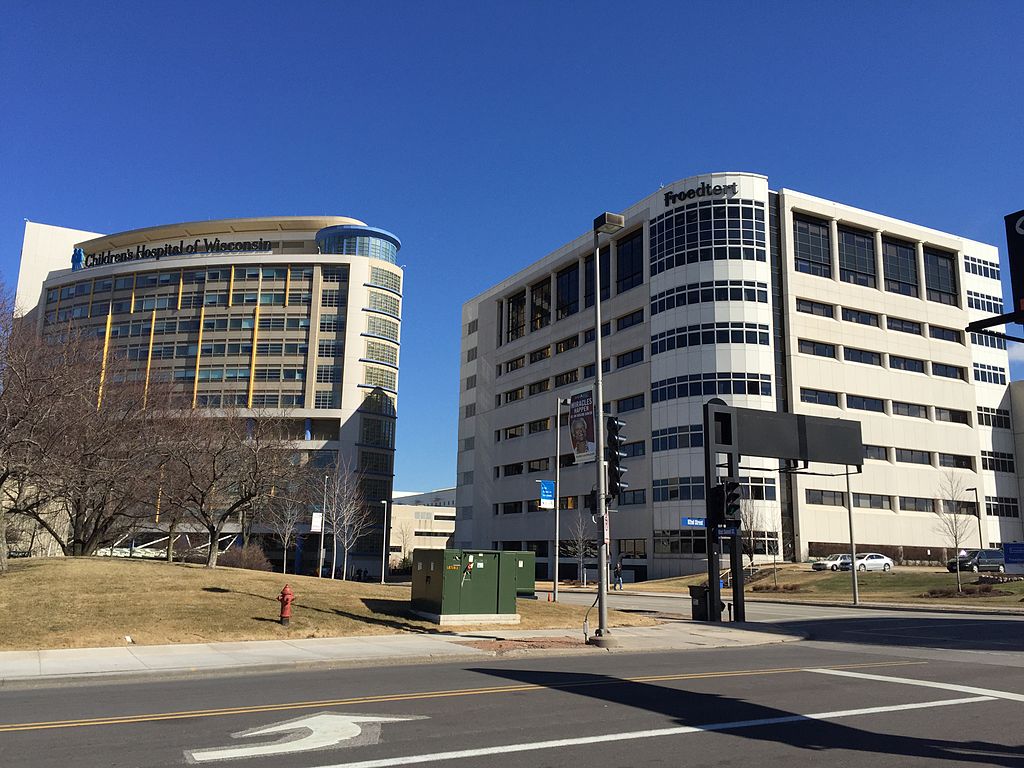You are using an out of date browser. It may not display this or other websites correctly.
You should upgrade or use an alternative browser.
You should upgrade or use an alternative browser.
Covid Vaccine
- Thread starter jitter77
- Start date
God Bless those vaccines. They prevent infection and spread. /Floggy
The report says there may be up to eight positive cases within the Cowboys organization.
Offensive line coaches Joe Philbin and Jeff Blasko have both also been ruled out because of COVID protocols.
The Cowboys are hoping to have wide receiver Amari Cooper back from his stint on the COVID-19 reserve list, while Terence Steele and Blake Jarwin were both placed on the COVID-19 reserve list in recent days.
Covid outbreak strikes the (Fully Vaccinated) Dallas Cowboys
The Cowboys coaching staff has been hit hard by COVID, and now the head coach is among those infected, as Mike McCarthy has tested positive and will miss the Thursday night game against the Saints.The report says there may be up to eight positive cases within the Cowboys organization.
Offensive line coaches Joe Philbin and Jeff Blasko have both also been ruled out because of COVID protocols.
The Cowboys are hoping to have wide receiver Amari Cooper back from his stint on the COVID-19 reserve list, while Terence Steele and Blake Jarwin were both placed on the COVID-19 reserve list in recent days.
- Joined
- Apr 8, 2014
- Messages
- 13,010
- Reaction score
- 21,179
- Points
- 113
CDC is already calling for boosters for Omicron. This is insane. **** is never going away. Best you can do is take the steps you feel necessary and live your life. If you really are going to die, why go out with regrets?
FLOGGY. THIS IS FOR YOU. IT'S THE NE JOURNAL OF MEDICINE. SCIENCE.
I know it's a lot of really big words. Take your time.
COVID survivors with natural immunity at low risk for reinfection or severe symptoms

Using national, federated databases that have captured all SARS-CoV-2–related data since the onset of the pandemic (Section S1 in the Supplementary Appendix, available with the full text of this letter at NEJM.org), we investigated the risk of severe disease (leading to acute care hospitalization), critical disease (leading to hospitalization in an intensive care unit [ICU]), and fatal disease caused by reinfections as compared with primary infections in the national cohort of 353,326 persons with polymerase-chain-reaction (PCR)–confirmed infection between February 28, 2020, and April 28, 2021, after exclusion of 87,547 persons with a vaccination record. Primary infection was defined as the first PCR-positive swab. Reinfection was defined as the first PCR-positive swab obtained at least 90 days after the primary infection. Persons with reinfection were matched to those with primary infection in a 1:5 ratio according to sex, 5-year age group, nationality, and calendar week of the PCR test date (Fig. S1 and Table S1 in the Supplementary Appendix). Classification of severe, critical, and fatal Covid-19 followed World Health Organization guidelines, and assessments were made by trained medical personnel through individual chart reviews.
Of 1304 identified reinfections, 413 (31.7%) were caused by the B.1.351 variant (subsequent variants), 57 (4.4%) by the B.1.1.7 variant (Alpha), 213 (16.3%) by “wild-type” virus, and 621 (47.6%) were of unknown status (Section S1 in the Supplementary Appendix). For reinfected persons, the median time between first infection and reinfection was 277 days (interquartile range, 179 to 315). The odds of severe disease at reinfection were 0.12 times (95% confidence interval [CI], 0.03 to 0.31) that at primary infection (Table 1). There were no cases of critical disease at reinfection and 28 cases at primary infection (Table S3), for an odds ratio of 0.00 (95% CI, 0.00 to 0.64). There were no cases of death from Covid-19 at reinfection and 7 cases at primary infection, resulting in an odds ratio of 0.00 (95% CI, 0.00 to 2.57). The odds of the composite outcome of severe, critical, or fatal disease at reinfection were 0.10 times (95% CI, 0.03 to 0.25) that at primary infection. Sensitivity analyses were consistent with these results (Table S2).
Reinfections had 90% lower odds of resulting in hospitalization or death than primary infections. Four reinfections were severe enough to lead to acute care hospitalization. None led to hospitalization in an ICU, and none ended in death. Reinfections were rare and were generally mild, perhaps because of the primed immune system after primary infection.
In earlier studies, we assessed the efficacy of previous natural infection as protection against reinfection with SARS-CoV-22,3 as being 85% or greater. Accordingly, for a person who has already had a primary infection, the risk of having a severe reinfection is only approximately 1% of the risk of a previously uninfected person having a severe primary infection. It needs to be determined whether such protection against severe disease at reinfection lasts for a longer period, analogous to the immunity that develops against other seasonal “common-cold” coronaviruses,4 which elicit short-term immunity against mild reinfection but longer-term immunity against more severe illness with reinfection. If this were the case with SARS-CoV-2, the virus (or at least the variants studied to date) could adopt a more benign pattern of infection when it becomes endemic.4

As the vaccines wane, it continues to appear that natural immunity is our strongest defense.
And his math skills.No. I love his knowledge
Wisconsin Children’s Hospital struggles to treat 18 Waukesha victims because of Vaccine mandate

Mandates causing shortages, innocent people suffering. "And people died" as Liberals love to say.


Hospital Struggles To Treat 18 Waukesha Victims Due To Vaccine Mandate
A high-ranking official said the hospital has hundreds of open positions and attributes much of the staffing shortage to the COVID-19 vaccine mandate.
 thefederalist.com
thefederalist.com
The largest children’s hospital in Wisconsin has been struggling to care for patients injured in the Waukesha Christmas parade attack on Nov. 21 in large part because of staffing shortages stemming from its COVID-19 vaccine mandate, multiple sources say.
Eighteen children were brought to the Children’s Wisconsin Milwaukee Hospital with injuries suffered when a driver plowed into parade-goers that Sunday afternoon. Several remain in critical or serious condition, and an eight-year-old boy died of his injuries Tuesday. As of Monday morning, the hospital was still treating seven victims.
Six people were killed when a suspect identified as Darrell E. Brooks, Jr. allegedly plowed into parade-goers approximately a week ago. He has been charged with first-degree intentional homicide and faces a maximum sentence of life in prison if convicted.
Sources at Children’s Wisconsin indicate that when victims first started to be transported to the hospital, it did not have enough nurses or support staff to adequately handle the sudden rush.
“It was a nightmare,” said one nurse, who spoke on condition of anonymity because she is not authorized to speak on the record. “We just don’t have enough people and [supervisors] were frantically calling in everyone they could, but it wasn’t enough. We are taking care of everyone the best we can, but it’s hard.”
A high-ranking official at Children’s, who also spoke on condition of anonymity, said the hospital currently has hundreds of open positions and attributes much of the staffing shortage to the COVID-19 vaccine mandate. The Children’s Wisconsin website lists 239 open positions at its Milwaukee hospital and more than 450 across all of its campuses.
Flogged has already been conditioned to love the jab. In fact, if you say anything that disparages the jab, it gets violently ill ie. retarded.


FLOGGY. THIS IS FOR YOU. IT'S THE NE JOURNAL OF MEDICINE. SCIENCE.
I know it's a lot of really big words. Take your time.
COVID survivors with natural immunity at low risk for reinfection or severe symptoms
View attachment 7051
Using national, federated databases that have captured all SARS-CoV-2–related data since the onset of the pandemic (Section S1 in the Supplementary Appendix, available with the full text of this letter at NEJM.org), we investigated the risk of severe disease (leading to acute care hospitalization), critical disease (leading to hospitalization in an intensive care unit [ICU]), and fatal disease caused by reinfections as compared with primary infections in the national cohort of 353,326 persons with polymerase-chain-reaction (PCR)–confirmed infection between February 28, 2020, and April 28, 2021, after exclusion of 87,547 persons with a vaccination record. Primary infection was defined as the first PCR-positive swab. Reinfection was defined as the first PCR-positive swab obtained at least 90 days after the primary infection. Persons with reinfection were matched to those with primary infection in a 1:5 ratio according to sex, 5-year age group, nationality, and calendar week of the PCR test date (Fig. S1 and Table S1 in the Supplementary Appendix). Classification of severe, critical, and fatal Covid-19 followed World Health Organization guidelines, and assessments were made by trained medical personnel through individual chart reviews.
Of 1304 identified reinfections, 413 (31.7%) were caused by the B.1.351 variant (subsequent variants), 57 (4.4%) by the B.1.1.7 variant (Alpha), 213 (16.3%) by “wild-type” virus, and 621 (47.6%) were of unknown status (Section S1 in the Supplementary Appendix). For reinfected persons, the median time between first infection and reinfection was 277 days (interquartile range, 179 to 315). The odds of severe disease at reinfection were 0.12 times (95% confidence interval [CI], 0.03 to 0.31) that at primary infection (Table 1). There were no cases of critical disease at reinfection and 28 cases at primary infection (Table S3), for an odds ratio of 0.00 (95% CI, 0.00 to 0.64). There were no cases of death from Covid-19 at reinfection and 7 cases at primary infection, resulting in an odds ratio of 0.00 (95% CI, 0.00 to 2.57). The odds of the composite outcome of severe, critical, or fatal disease at reinfection were 0.10 times (95% CI, 0.03 to 0.25) that at primary infection. Sensitivity analyses were consistent with these results (Table S2).
Reinfections had 90% lower odds of resulting in hospitalization or death than primary infections. Four reinfections were severe enough to lead to acute care hospitalization. None led to hospitalization in an ICU, and none ended in death. Reinfections were rare and were generally mild, perhaps because of the primed immune system after primary infection.
In earlier studies, we assessed the efficacy of previous natural infection as protection against reinfection with SARS-CoV-22,3 as being 85% or greater. Accordingly, for a person who has already had a primary infection, the risk of having a severe reinfection is only approximately 1% of the risk of a previously uninfected person having a severe primary infection. It needs to be determined whether such protection against severe disease at reinfection lasts for a longer period, analogous to the immunity that develops against other seasonal “common-cold” coronaviruses,4 which elicit short-term immunity against mild reinfection but longer-term immunity against more severe illness with reinfection. If this were the case with SARS-CoV-2, the virus (or at least the variants studied to date) could adopt a more benign pattern of infection when it becomes endemic.4
View attachment 7052
As the vaccines wane, it continues to appear that natural immunity is our strongest defense.
Why would you expect me to read something in another language?
- FloggedbyFauci
- Joined
- Sep 12, 2014
- Messages
- 16,697
- Reaction score
- 6,620
- Points
- 113
I’m quite certain it has primarily to do with their very low vaccination rate. The ICU docs who were commenting on the prevalence of obesity in Covid patients prior to the vaccine are now commenting on the prevalence of the unvaccinated.Have you thought it may be about the overall fitness of West Virginians versus Israelis? I would bet good money on the obesity rate being far higher in WV than in Israel. That is the single biggest linked factor between cases and deaths.
West Virginia’s hillbillies make poor health decisions be it diet and exercise or whether to get vaccinated or not.
- Joined
- Sep 12, 2014
- Messages
- 16,697
- Reaction score
- 6,620
- Points
- 113
We already knew it, but Fauci outed himself as a typical, partisan bureaucrat. **** him.
Listen to this guy.....
Oh, please! Tim was listening to that ******* tool back when he was making this claim…

Opinion | We’ll Have Herd Immunity by April
Covid cases have dropped 77% in six weeks. Experts should level with the public about the good news.
I’m quite certain it has primarily to do with their very low vaccination rate.
Oh you're "quite certain", well now that's science! OMG!
- Joined
- Apr 8, 2014
- Messages
- 15,531
- Reaction score
- 25,263
- Points
- 113
so tying in a couple of threads here. so i am vaxxed/boosted and now have covid. 10 days quarantined but........ i dont feel bad, and I have so much food/water etc stocked away that it will not be an issue. always be prepared!!
ps need a couple good shows to watch if you have any ideas
ps need a couple good shows to watch if you have any ideas
I’m quite certain it has primarily to do with their very low vaccination rate.
You're guessing because it confirms your confirmation bias.
The ICU docs who were commenting on the prevalence of obesity in Covid patients prior to the vaccine are now commenting on the prevalence of the unvaccinated.
Not one scientific community has dismissed the fact that obesity and COVID go hand in hand with deaths.
West Virginia’s hillbillies make poor health decisions be it diet and exercise or whether to get vaccinated or not.
It used to be South Dakota Rubes.
North Dakota Rubes.
Florida Red Necks.
Why do you no longer speak of those states asshat?
Sorry to hear Blitz. Figured if the Mrs. had it it was likely you would too.
Man, TV shows, depends on what you like. I'm sure you'll get some good suggestions. Didn't hear very good things about La Brea though. My taste is all over the place but Chernobyl, Peaky Blinders, Ozark, Haunting of Hill House, Narcos, Narcos: Mexico are some good ones IMO.
Watched some Yellowstone and don't get the hype. Heard of a new show called Bloodlands but never seen it. One of my favorites still that you probably like is Beat Bobby Flay.
Man, TV shows, depends on what you like. I'm sure you'll get some good suggestions. Didn't hear very good things about La Brea though. My taste is all over the place but Chernobyl, Peaky Blinders, Ozark, Haunting of Hill House, Narcos, Narcos: Mexico are some good ones IMO.
Watched some Yellowstone and don't get the hype. Heard of a new show called Bloodlands but never seen it. One of my favorites still that you probably like is Beat Bobby Flay.
I know. That tool who is a professor at Johns Hopkins Medical School. Wrote an opinion piece based upon the science of the time.Oh, please! Tim was listening to that ******* tool back when he was making this claim…

Opinion | We’ll Have Herd Immunity by April
Covid cases have dropped 77% in six weeks. Experts should level with the public about the good news.www.wsj.com
As opposed to a guy that hasn't seen a patient in 40 years, and 750k Americans died on his watch.
Get well soon.so tying in a couple of threads here. so i am vaxxed/boosted and now have covid. 10 days quarantined but........ i dont feel bad, and I have so much food/water etc stocked away that it will not be an issue. always be prepared!!
ps need a couple good shows to watch if you have any ideas
- Joined
- Apr 23, 2014
- Messages
- 11,708
- Reaction score
- 7,483
- Points
- 113
Did you get a rapid test or PCR test? We had a lady at work who had bad respiratory symptoms. She was tested for 3 days and came back negative. The third day after work she went to hospital and ended up testing positive with COVID pneumonia. Luckily she was only in the hospital about a day total. Hopefully you and your wife feel better but if the symptoms persist I would get re-tested in a couple days.Wife and I are both covid negative. Gonna go see my doctor and hopefully get a zpack or something to knock this cough out.
EDIT: Saw after I posted this you got the real flu.
- Joined
- Apr 12, 2014
- Messages
- 3,011
- Reaction score
- 2,653
- Points
- 113
Barry Bonds is toastI have heard it will kill if your head is to obese.
CDC is already calling for boosters for Omicron. This is insane. **** is never going away. Best you can do is take the steps you feel necessary and live your life. If you really are going to die, why go out with regrets?
I know it's the Greek thing, but just the name Omricon itself - just sounds like something out of a Transformers movie. Man the number they are doing on the world. That Virology lab in Wuhan though, pretty scary what's also likely in there.
- Joined
- Jun 8, 2014
- Messages
- 1,538
- Reaction score
- 1,606
- Points
- 113
so tying in a couple of threads here. so i am vaxxed/boosted and now have covid. 10 days quarantined but........ i dont feel bad, and I have so much food/water etc stocked away that it will not be an issue. always be prepared!!
ps need a couple good shows to watch if you have any ideas
Hope you and the wife are okay and recover without any issues.
- Joined
- Apr 9, 2014
- Messages
- 4,935
- Reaction score
- 10,212
- Points
- 113
WE? are you working at Pfizer or Monderna as a virologist? lol...I highly doubt that. You can't pen a constructed sentence properly.With at least 30 mutations to the virus expect a bad happening coming but way. The question is, will the vaccine be enough or will we need to develop another one?
But please, elaborate on this thought of yours. Deep thoughts with Coach.
In my best Norm Macdonald voice: You have to feel sick for what hypochondriacs are going through these days. It's ridiculous.
- Joined
- Sep 12, 2014
- Messages
- 16,697
- Reaction score
- 6,620
- Points
- 113
That’s great, Tim. These people can hang their hat on that…FLOGGY. THIS IS FOR YOU. IT'S THE NE JOURNAL OF MEDICINE. SCIENCE.
I know it's a lot of really big words. Take your time.
COVID survivors with natural immunity at low risk for reinfection or severe symptoms
View attachment 7051
Using national, federated databases that have captured all SARS-CoV-2–related data since the onset of the pandemic (Section S1 in the Supplementary Appendix, available with the full text of this letter at NEJM.org), we investigated the risk of severe disease (leading to acute care hospitalization), critical disease (leading to hospitalization in an intensive care unit [ICU]), and fatal disease caused by reinfections as compared with primary infections in the national cohort of 353,326 persons with polymerase-chain-reaction (PCR)–confirmed infection between February 28, 2020, and April 28, 2021, after exclusion of 87,547 persons with a vaccination record. Primary infection was defined as the first PCR-positive swab. Reinfection was defined as the first PCR-positive swab obtained at least 90 days after the primary infection. Persons with reinfection were matched to those with primary infection in a 1:5 ratio according to sex, 5-year age group, nationality, and calendar week of the PCR test date (Fig. S1 and Table S1 in the Supplementary Appendix). Classification of severe, critical, and fatal Covid-19 followed World Health Organization guidelines, and assessments were made by trained medical personnel through individual chart reviews.
Of 1304 identified reinfections, 413 (31.7%) were caused by the B.1.351 variant (subsequent variants), 57 (4.4%) by the B.1.1.7 variant (Alpha), 213 (16.3%) by “wild-type” virus, and 621 (47.6%) were of unknown status (Section S1 in the Supplementary Appendix). For reinfected persons, the median time between first infection and reinfection was 277 days (interquartile range, 179 to 315). The odds of severe disease at reinfection were 0.12 times (95% confidence interval [CI], 0.03 to 0.31) that at primary infection (Table 1). There were no cases of critical disease at reinfection and 28 cases at primary infection (Table S3), for an odds ratio of 0.00 (95% CI, 0.00 to 0.64). There were no cases of death from Covid-19 at reinfection and 7 cases at primary infection, resulting in an odds ratio of 0.00 (95% CI, 0.00 to 2.57). The odds of the composite outcome of severe, critical, or fatal disease at reinfection were 0.10 times (95% CI, 0.03 to 0.25) that at primary infection. Sensitivity analyses were consistent with these results (Table S2).
Reinfections had 90% lower odds of resulting in hospitalization or death than primary infections. Four reinfections were severe enough to lead to acute care hospitalization. None led to hospitalization in an ICU, and none ended in death. Reinfections were rare and were generally mild, perhaps because of the primed immune system after primary infection.
In earlier studies, we assessed the efficacy of previous natural infection as protection against reinfection with SARS-CoV-22,3 as being 85% or greater. Accordingly, for a person who has already had a primary infection, the risk of having a severe reinfection is only approximately 1% of the risk of a previously uninfected person having a severe primary infection. It needs to be determined whether such protection against severe disease at reinfection lasts for a longer period, analogous to the immunity that develops against other seasonal “common-cold” coronaviruses,4 which elicit short-term immunity against mild reinfection but longer-term immunity against more severe illness with reinfection. If this were the case with SARS-CoV-2, the virus (or at least the variants studied to date) could adopt a more benign pattern of infection when it becomes endemic.4
View attachment 7052
As the vaccines wane, it continues to appear that natural immunity is our strongest defense.

At Least 7 Anti-Vaccine, Anti-Mask Conservative Activists Have Died of COVID-19 in Recent Weeks
At least several of them also changed their minds about vaccination before ultimately passing away, saying they should have received the vaccine.
- Joined
- Apr 8, 2014
- Messages
- 553
- Reaction score
- 873
- Points
- 93
Within the first 48 hrs of onset of symptomsIsn’t it within the first 72hr

